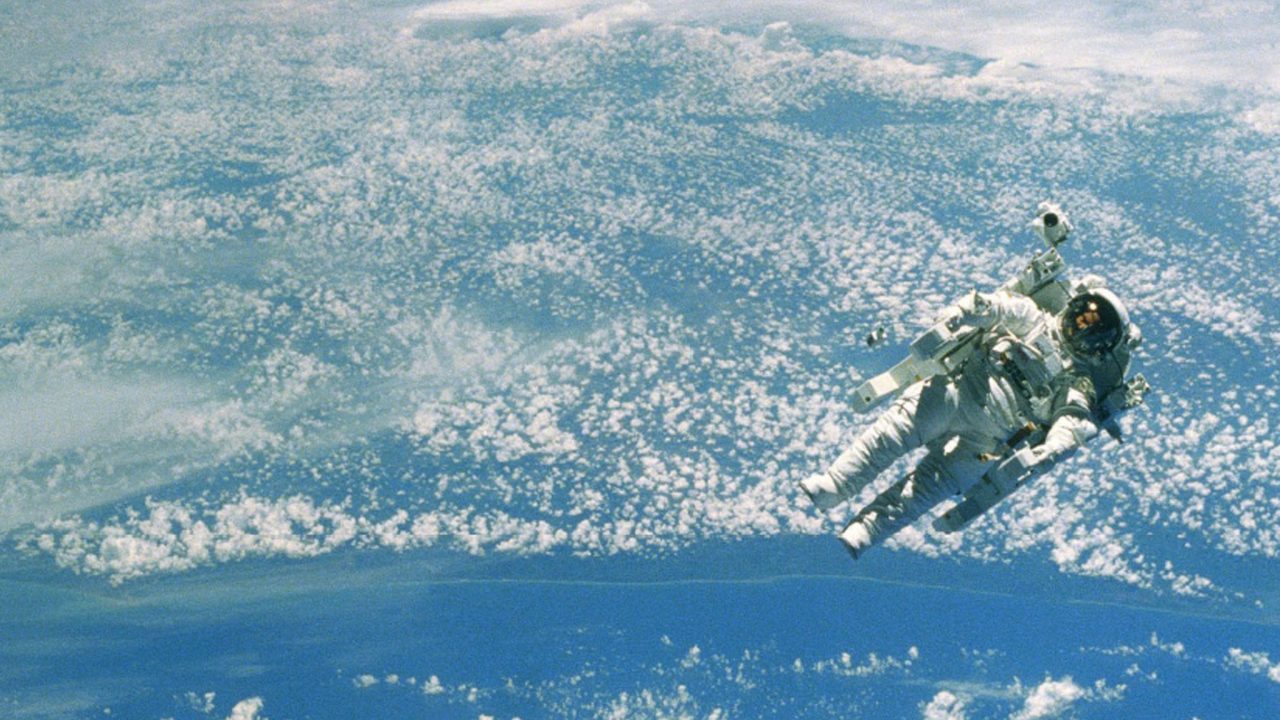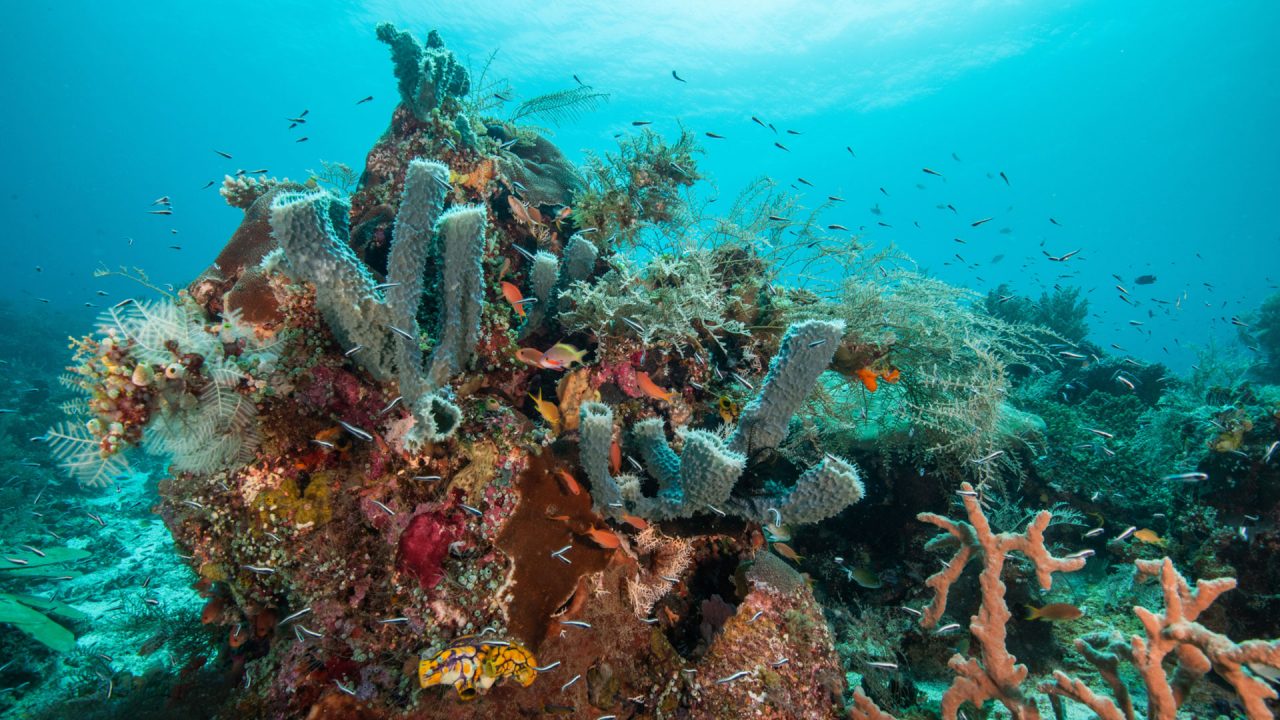
Mini-Lesson for Space School – Astrogeology
Mini-Lesson for Space School – Astrogeology
Mini-Lesson for Space School – Astrogeology
Themes: Science and technology, Earth and space, living universe, career in science, skills and strategies for exploring and experimenting
Ages: 12-14
Keywords/Topics: Geological and geophysical phenomena, interior structure of Earth, hydrosphere, habitats, diversity of living things, astronomical phenomena, solar system, asteroids and comets, meteorite impacts, conditions conducive to the development of life, techniques and instruments of science and technology
Guiding Question: How important is the study of the Earth and the Haughton Crater to space exploration? Why is the Haughton Crater, located on an island in Nunavut, in Northern Canada, a good site for preparing for missions to planet Mars?
Summary: While we associate astronauts with space and weightlessness, they do, in fact, spend an enormous amount of time with both feet planted on the Earth preparing for their missions and fine-tuning their observation skills.
When these women and men leave the surface of the Earth on a mission, they give us a unique perspective on the attempt to understand the mechanisms that transform planets and that might have played a role in the formation of life. They are, in a manner of speaking, the eyes and arms of numerous scientific research teams that do not have the chance to go to space.
In the Astrogeology module of the NFB’s Space School online educational resource, we follow the training of Canadian astronaut Jeremy Hansen, who joins astrogeologist Gordon Osinski and his team as they explore the most extraterrestrial of terrestrial environments.
Activity 1) Schematic Drawing, Scale Drawing
NFB Space School – Astrogeology – Lesson 4 – Chapter 1 – Layers of the Earth, Scott Simpson, provided by the National Film Board of Canada
The above clip explains how meteorite impacts help us learn more about the nature of the rocks embedded deep beneath the surface. Studying seismic waves, which are produced mainly during earthquakes, also allows us to develop models of the interior structure of our planet and other bodies in the solar system.
Similar to medical imaging techniques (e.g., ultrasound), seismic waves travel inside celestial bodies, reflecting and deflecting off the materials and structures they meet, allowing us to get an image of them. A seismometer that can measure ground vibration was even recently deployed on Mars by the InSight robotic lander.
On a piece of paper or using your computer, try to represent the interior structure of Earth and Mars on the same scale (suggested scale: 1 cm equals 1,000 km). Here are the different structures and their actual size.
Earth
Inner core: Radius of ~ 1,220 km
Outer core: Outer radius extends to ~ 3,480 km
Mantle: Outer radius extends to ~ 6,340 km
Crust: Outer radius extends to ~ 6,370 km
Mars
Core: Radius of ~ 1,300 km
Mantle: Outer radius extends to ~ 3,360 km
Crust: Outer radius extends to ~ 3,390 km
Go Deeper
The European website of the InSight probe, which landed on Mars in November 2018, contains a lot of information on the interior structure of planets and the science of astrogeology. It also offers another explanation for how meteorite impacts might reveal what’s hiding beneath the surface of the red planet. Because there is much less tectonic activity on Mars than there is on Earth, we count on impacts to generate the seismic waves we need to probe the interior of the planet.
Click here to learn more and explore the mission’s website:
Activity 2) Establishing an Experimental Protocol
NFB Space School – Astrogeology – Lesson 3 – Chapter 2 – Rocks in the Field, Scott Simpson, provided by the National Film Board of Canada
Astronauts such as Jeremy Hansen must have extensive and varied knowledge to be able to effectively participate in missions with diverse scientific objectives. But first and foremost, astronauts are people who have the technical knowledge and the physical and psychological capabilities to go to places that are almost inaccessible to geologists and other scientists.
Team collaboration and a methodical approach to work are therefore crucial to scientific missions.
Referring to the above video, list in their proper order the steps an astronaut should follow when on a mission to collect soil samples on Mars. In your answer indicate the tools and instruments to be used and explain why the Haughton Crater is a good site for preparing for missions to Mars.
Describe the role that a geologist on Earth could play in this mission (before, during and after the mission).
Go Deeper
The Haughton Crater on Devon Island is a choice site for training astronauts and simulating missions to Mars. Check out the Google Earth link to take a virtual VIP tour of the crater.
Activity 3) Putting Spontaneous Concepts to the Test
NFB Space School – Astrogeology – Lesson 4 – Chapter 3 – Comparing Earth to Other Planets, Scott Simpson, provided by the National Film Board of Canada
Before watching the video clip, take a moment to surf the net and check out the surface of the moon, Mars and Earth. Create a table and write down the geological differences that you notice on each planetary object: number of craters and mountains, evenness of the surface, water run-off patterns, wind patterns, presence of an atmosphere, etc.
Write down what you think is the cause of the geological differences between these three bodies (your hypothesis).
After watching the video, re-read your hypothesis and make comments on it using a different coloured pencil. Did the experts confirm your hypothesis? What do they say is the reason that there are fewer visible craters on the Earth’s surface than on the moon and on Mars?
Go Deeper
To see the different impact craters on Earth on a Google map, click here.
The red icons show visible craters and the green icons show craters that have been erased by erosion. Click on a few of them for fun. Do you notice a difference between the types of craters found in desert environments (Northern Africa, Australia) and the types found in temperate environments (North America, Europe)?
Not only are desert environments conducive to astrogeology because of slower erosion that preserves impact craters, but meteorite searches are also easier in these types of environments.
Even though a meteorite can be found anywhere—in your backyard or at summer camp—seasoned meteorite hunters travel to desert environments in order to increase their chances of finding one of these precious rocks.
But it’s not that meteorites fall in deserts more often. It’s just that it’s not as difficult to find and identify them in a desert as it would be elsewhere. Why? Because it’s easier to travel in a desert; there are no visual obstacles, such as vegetation; and there is no water, which could degrade the surface of the meteorites, etc.
Activity 4) Comparative Analysis
NFB Space School – Astrogeology – Lesson 5 – Chapter 2 – Search for Life, Scott Simpson, provided by the National Film Board of Canada
After watching the video, describe the features of the habitat represented by the Haughton Crater. Here are a few features to get you started, but feel free to add others: geographic location, climate, topography, soil type, presence of water, and flora and fauna. You may refer to other sources to expand your research.
The majority of the ecosystems known to us depend on the conversion of solar energy by organisms capable of photosynthesis. This is the primary means of productivity that supplies energy to the rest of the food chain.
We also know that water is essential to all forms of life known to us. Now, 30% of the hydrosphere’s fresh water is groundwater, and this percentage is even higher in desert environments such as Devon Island. The ground on Mars also contains frozen water. Extremophiles are organisms that live in habitats that are deadly for most species: no light, very little water or extremely cold temperatures. As shown in the video, the endoliths that live in rocks are an example of extremophiles.
Based on the endoliths living in the Haughton Crater habitat, imagine and describe the types of organisms that could live (or that might have lived) on Mars, as well as the types of environments they might have colonized on Mars. Think the giant volcano on Mars, the ancient rivers and seas, and the polar ice caps!
Does the landing site of the Curiosity Rover resemble this type of environment?
Go Deeper
You can now explore Mars virtually on either your web browser or in virtual reality on your mobile device thanks to the data collected by the Curiosity Rover. Click here to explore.
Curiosity is not equipped to detect life on Mars. This rover’s research is geared more towards studying the current and past viability of Mars. However, Curiosity’s twin robot, Perseverance, does have the ability to detect remnants of past life on Mars. If all goes well, Perseverance will land in the delta of a dried-up river in the Jezero Crater in 2021. Do a search for this robot and the Mars 2020 mission on the Internet to find out more.
The comparative study of Earth’s environments and those of other worlds in the solar system is not only important for preparing for the missions of future astronauts, but it also helps us understand the history of the planets and how life might have come to be on Earth.
Understanding how organisms survive in environments as extreme as the Haughton Crater helps us to better choose our research sites on Mars. When all is said and done, this will maybe allow us to finally answer one of the biggest questions anyone could ever ask: Are we alone in the Universe?
Maxime Pivin Lapointe is a content creator and science educator at the Rio Tinto Alcan Planetarium in Montreal. With a major in science education, he has been dedicating his career to teaching science and sharing his fascination with the Universe for close to 20 years now. After spending 10 years observing and helping others discover the night sky in the Mont Mégantic region, he travelled across Quebec giving talks in high schools and CEGEPs. He has been putting his talents as a communicator and content creator to good use at the planetarium since 2013. He has also become a fulldome-show production specialist, among other things.
Pour lire cet article en français, cliquez ici.
Follow the Planetarium on Facebook // Twitter // Instagram // #PlanetariumRiotintoAlcan
Discover more Mini-Lessons | Watch educational films on NFB Education | Watch educational playlists on NFB Education | Follow NFB Education on Facebook | Follow NFB Education on Pinterest | Subscribe to the NFB Education Newsletter



